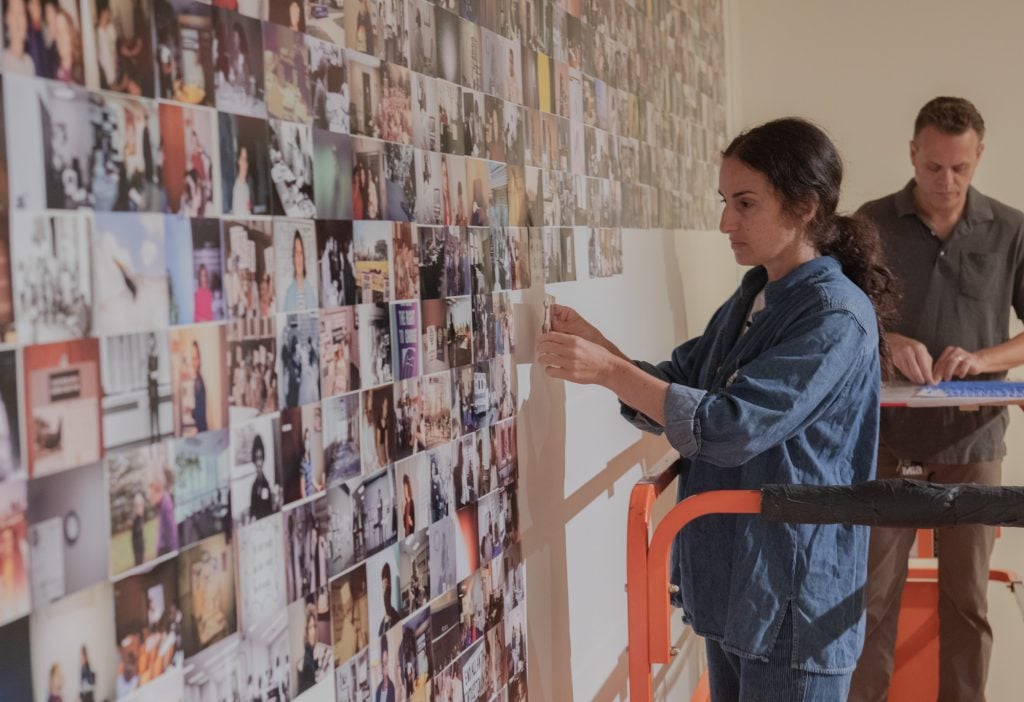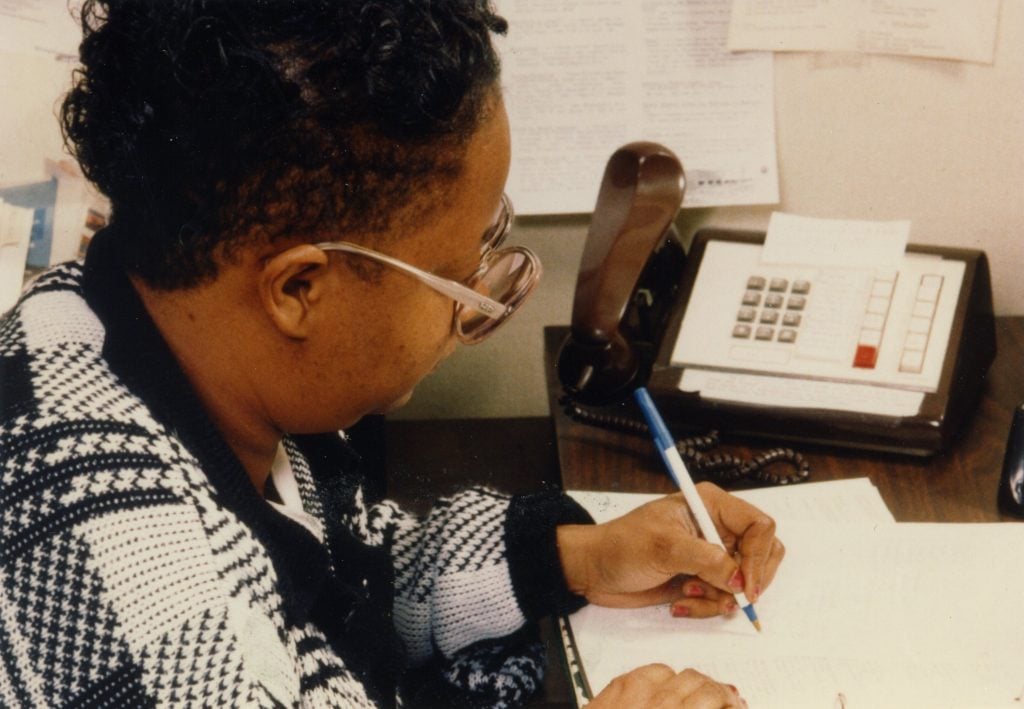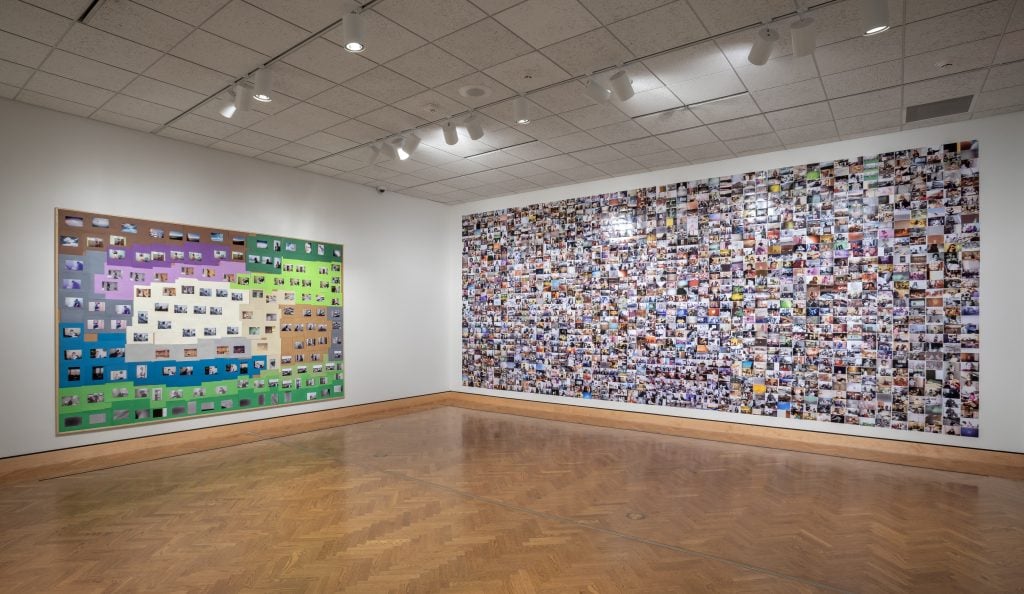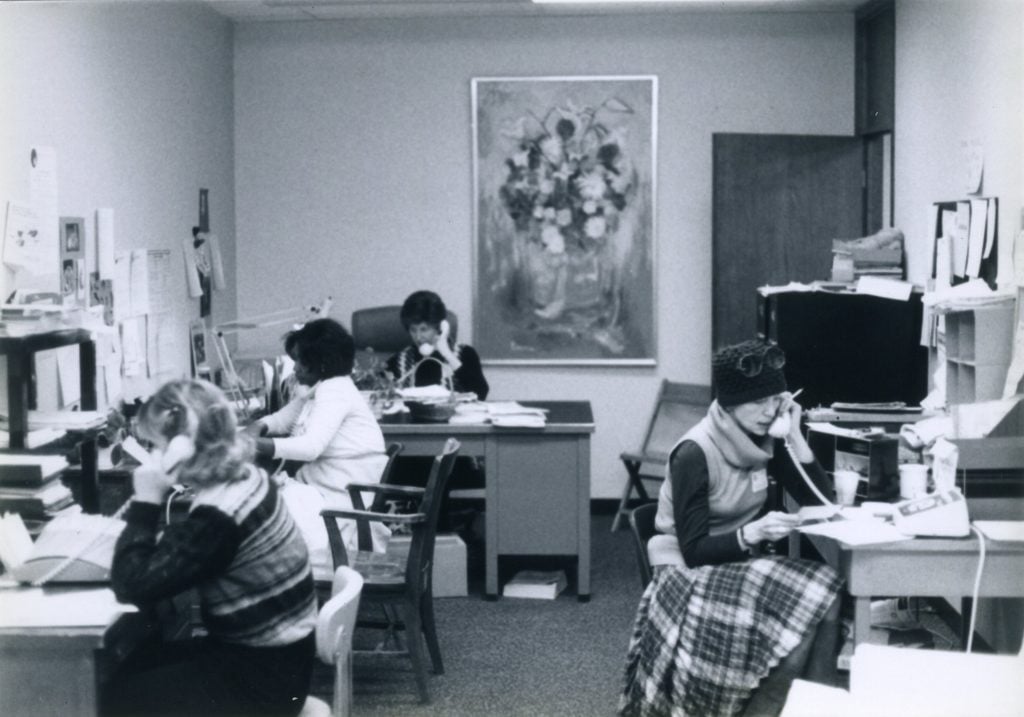On View
Artist Carmen Winant’s New Show Turns an Intimate Eye on the Subtle—Even Banal—Realities of Abortion Care
The exhibition substitutes sensationalized images for humble, human ones.

The exhibition substitutes sensationalized images for humble, human ones.

Taylor Dafoe

The title of Carmen Winant’s new exhibition at the Minneapolis Institute of Art, “The last safe abortion,” does not really describe the thousands of archival photographs that line its walls.
Set in women’s health clinics, Winant’s pictures don’t depict the procedure, but the behind-the-scenes work that makes it possible. Shown are staffers answering phones, filing paperwork, scheduling appointments. Far from the sensationalized propaganda peddled by right-wingers, these images are, by design, downright banal.
In compiling the photos, which she culled from clinics, universities, and local historical societies throughout the Midwest, Winant said she was thinking about the “visuality of abortion care” and “what it would mean to countermand right-wing efforts to traumatize.”
“For me,” she explained, “that meant meeting it with images of care, however ‘unphotographic’ they may be.”

A photograph on view in Carmen Winant’s “The last safe abortion” at the Minneapolis Institute of Art. Courtesy of Iowa Women’s Archive, University of Iowa.
More than a photographer, Winant is an accumulator. For works like My Birth (2018) and Pictures of Women Working (2016–22), she amasses huge troves of found images and other printed material, then displays them without adornment or manipulation. Only occasionally does she include her own photos, and even then she doesn’t draw attention to them. Preservation is a fundamental facet of her practice; so is the simple gesture of showing events and people that we know but rarely consider.
Both imperatives are at the heart of “The last safe abortion.” So is an undeniable sense of urgency: the show arrives at a time when access to abortion and other reproductive services is rapidly being curbed throughout the country following the U.S. Supreme Court’s overturning of Roe vs. Wade last year. Health facilities were shuttering even as the artist visited them.
The name of the exhibition reflects that precarity. It came from Winant’s conversations with clinic physicians and directors who offered—“almost verbatim,” she noted—the same shared pledge: “We will provide the last safe abortion.”
“It really struck me as so powerful. It felt at once so resilient, so resolute and determined, but also, at the same time, so elegiac.” For these facilities, she pointed out, “it was not a question of if, but when.”

Installation view of Carmen Winant’s “The last safe abortion” at the Minneapolis Institute of Art, 2023. Courtesy of MIA.
Move close to museum’s walls and you’ll begin to pick out recurring faces and places and rituals. Beyond the logistical work, we also see clinicians mingling, drinking, sharing smiles and slices of cake at staff birthday parties. Quickly it becomes clear that what’s at stake in a reversed-Roe world is not just access to abortion, but also the livelihoods of the people that enable it.
In another artist’s hands, you might wonder if the use of so many pictures undermines these subjects’ individual stories. Does the quantity of the work depersonalize it? Would a few good pictures make for a more potent portrait of the issue at hand than thousands of them?
Winant, to her credit, doesn’t sacrifice intimacy through scale; she uses scale to embody intimacy. You can walk into her installation, let it surround and hug you. Ultimately, what’s on view is not a portrait of individuals, but of communities, coalitions, and groups united in a fight.

A photograph on view in Carmen Winant’s “The last safe abortion” at the Minneapolis Institute of Art. Courtesy of Special Collections, Cleveland State University.
Volume is not just an artistic strategy for Winant. It’s also a political one.
“I have thought so much about what it takes to build social alliances,” she said, noting a long-held interest in the history of radical movements and the tried-and-true grassroots formula of disseminating information as widely as possible. “That’s what it takes. Much like working in an abortion clinic and answering the phone, there’s something that’s so unglamorous about it,” she added.
“If you’ve ever done any work in organizing, you know it’s endless spreadsheets and meetings. That’s how shit gets done.”
“The last safe abortion” is on view at the Minneapolis Institute of Art, 2400 3rd Ave S, Minneapolis, through December 31.
More Trending Stories: